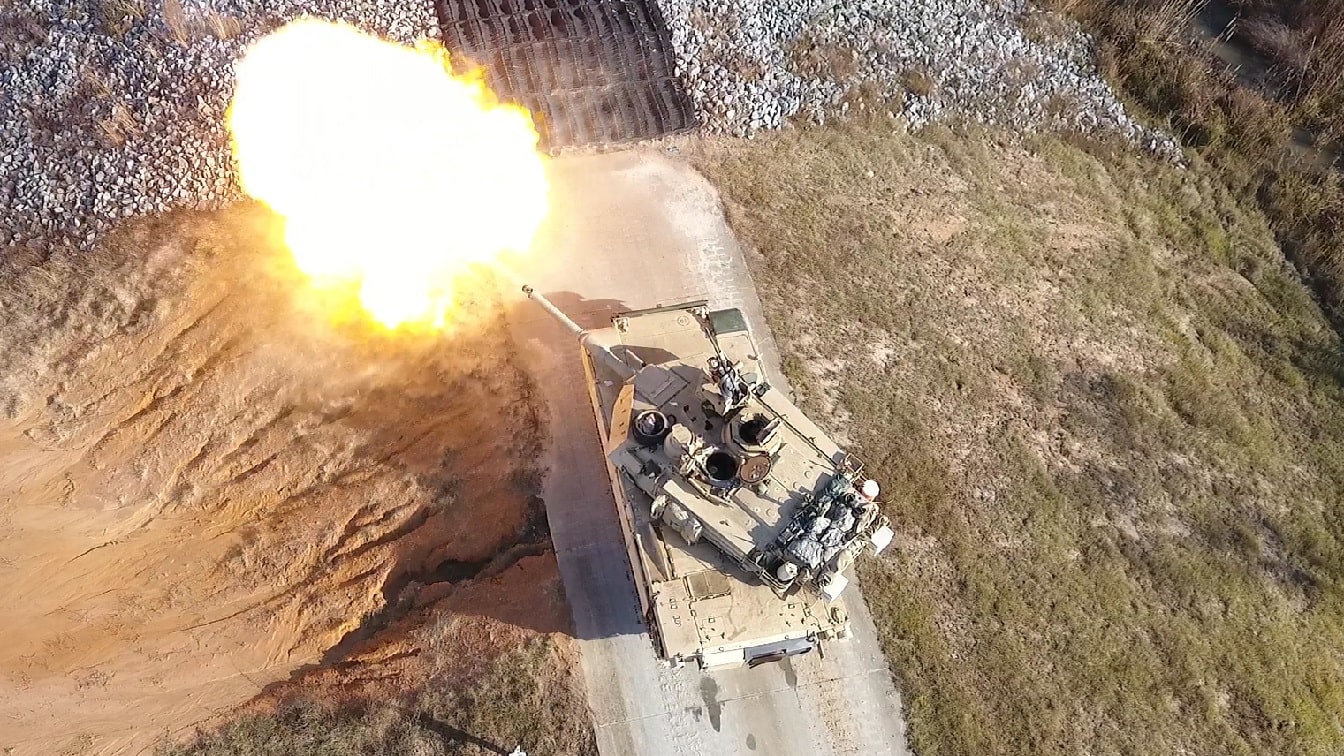Suwałki Gap, Explained: During the Cold War, NATO planners pinpointed a potential flashpoint for World War III. It was the Fulda Gap, which was actually made up of several open passes running through the hills in the center of what was then West Germany, about 60 miles northeast of Frankfurt. It was determined to be a likely invasion route that Warsaw Pact forces would take to charge into Western Europe.
Interestingly, the Fulda Gap also corresponded to the route that the French Emperor Napoleon chose to take to withdraw his forces following his defeat at the Battle of Leipzig.
Today, the Fulda Gap is likely of little strategic importance, and instead, the new flashpoint could be the Suwałki Gap, a narrow 70km long stretch that for years has been dubbed “NATO’s Achilles Heel,” and even the “Most Dangerous Place on Earth.”
Suwałki Gap: Mind The Gap
The Suwałki Gap essentially runs along the Lithuanian-Polish border, one that was established in 1920. However, it also separates the Russian exclave of Kaliningrad on the Baltic Sea from Belarus. The region was annexed after the Second World War by the Soviet Union, and following the post-war migration/expulsion of Germans, the territory was repopulated with Russians and became the Kaliningrad Oblast.
The largest city, Kaliningrad was known until 1946 as Königsberg – which had been founded in 1255 of later was the capital of the State of the Teutonic Order, and later the Duchy of Prussia. It remains strategically important to the Russian military as is an ice-free port. Thousands of Russian soldiers and even nuclear weapons are maintained in the Oblast.
Following the Baltic States’ entry into NATO – notably Lithuania’s – Moscow has expressed concerns that Kaliningrad Oblast could be cut off, and that is essentially what happened after Russia launched its unprovoked invasion of Ukraine in late February.
Vilnius recently announced that Lithuania’s national railway would comply with European sanctions and would no longer permit the transit of certain goods across its territory from Belarus to Kaliningrad. That included coal, metals, and even building materials.
News of that ban came on Friday.
“We consider this to be a most serious violation,” Kaliningrad’s governor, Anton Alikhanov said in response to the ban, which he said could affect up to half of Russian exports to the exclave. Alikhanov has urged citizens not to resort to panic buying and said that vessels would ferry goods between Kaliningrad and Saint Petersburg.
Russia’s Eyes on the Baltic States
A great fear among all three Baltic States – Estonia, Latvia, and Lithuania – is that they’re essentially “next” on Russian President Vladimir Putin‘s list of objectives to restore the borders of the former Soviet Union. The three states had been controlled by Imperial Russia until 1918 and only briefly maintained independence in the interwar era. All three were annexed by the Soviet Union in 1939 at the start of the Second World War and were then part of the Soviet Union.
Lithuania had been the first republic to declare full independence from the Soviet Union, which occurred on March 11, 1990. That was quickly followed by the neighboring states of Latvia and Estonia. Any Russian attempt to take back the three states by force would likely involve an invasion through the Suwałki Gap to cut off NATO forces from Poland.
As Politico reported this week, the most dangerous aspect of the gap isn’t that it is sparsely populated farmland. While a Russian invasion could trigger NATO’s Article 5 mutual defense provision, the question is whether NATO leadership and all its members actually would risk World War II and potentially nuclear Armageddon to defend the corridor.
Putin may even feel he needs to act sooner than later, as Finland and Sweden have applied for NATO membership, which could turn the Baltic Sea into a NATO lake and further isolate Kaliningrad.
Lessons from Ukraine
A 2016 RAND Corp. report had suggested that the three states could be overrun in just days and that NATO would have a hard time countering an invasion. The Suwałki Gap was seen as a key corridor for Russia in such an invasion.
Perhaps, however, Russia has learned a valuable lesson in its fight with Ukraine. The Kremlin expected a swift victory, so much so that Russian troops lacked proper winter clothing but arrived with dress uniforms for a parade. Russia didn’t expect such fierce resistance, and there is little reason to expect that Russia would fare better in the Baltic States.
Given that Russian losses mounted as it failed to take Kyiv, and it continues to fight a long and hard battle to secure what it has managed to take, the Kremlin might see that it would be unwise to mount an invasion through the Suwałki Gap.
It likely wouldn’t end well, yet Putin remains an unpredictable wild card.
Now a Senior Editor for 1945, Peter Suciu is a Michigan-based writer who has contributed to more than four dozen magazines, newspapers and websites. He regularly writes about military hardware, firearms history, cybersecurity and international affairs. Peter is also a Contributing Writer for Forbes.

